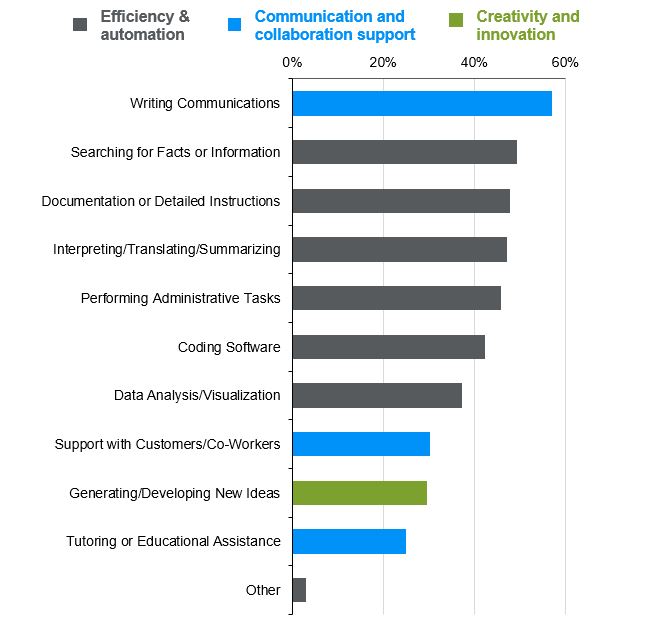Written by: Kerry Van Name
AI innovation is advancing at a remarkable pace, with new capabilities emerging faster than many companies and even public awareness, can absorb. Over the past week alone, major players have showcased new developments: Microsoft introduced over 50 AI tools aimed at the “agentic web,” Google revealed a more conversational AI search experience and OpenAI signaled its pivot into AI hardware with its latest acquisition. Tech enthusiasm has been strong, but for investors, the key question remains: how and where, are businesses actually putting AI to work?
A focus on operational efficiency
In a business environment shaped by cost pressures, labor shortages and an emphasis on supply chain resiliency, AI is seen less as a disruptor and more as an enabler. Companies are turning to AI to streamline workflows, reduce manual tasks and scale operations. In Q1 earnings calls, nearly 70% of the S&P 500 companies that mentioned AI specifically cited automation, optimization or efficiency use cases.1
Agentic AI – systems built to act autonomously within defined workflows – is playing a key role. Unlike general-purpose tools, these agents are trained and fine-tuned to reflect a company’s own data, goals and operational processes. Whether its supporting HR onboarding, handling service requests, or coordinating multi-step internal workflows, AI agents can drive faster, smarter operations. What distinguishes successful adoption is not just the technology itself, but the data it’s built on, the creativity in how it’s applied and the training that empowers employees to use it effectively.
Even as companies ramp up AI investment, adoption is still uneven. Roughly one-quarter of workers report regular AI usage2, but many still operate in environments without clear AI guidelines or structure in place. Workers may be using AI to save time, but how they use that time is often left to the individual. The next phase of adoption will likely involve more structured integration, as companies define governance, raise expectations and set their sights on measurable productivity gains.
This focus on operational efficiency is especially clear in financial services. In a recent Broadridge survey, 80% of financial firms noted moderate-to-large investments in AI this year.3 Firms are embedding AI into compliance processes, risk management systems and client services platforms.
Examples include:
- Detecting fraud and monitoring transactions in real time
- Assisting advisors with relevant insights and faster data delivery
- Automating compliance tasks to reduce manual effort and increase accuracy
Here, AI isn’t replacing humans–it’s complementing them.
Finding opportunity
The mega-cap tech firms may well remain at the helm of AI innovation and advancement, but for investors, opportunity increasingly lies beyond the companies building the tools and with the companies using them effectively. As adoption spreads across sectors like financials, industrials and healthcare, AI is becoming less of a standalone theme and more of a performance lever. In a landscape shaped by heightened policy uncertainty and moderating economic growth, how companies use that lever may ultimately define who leads and who lags behind.
How workers are using Generative AI
Employed workers aged 18-64

Source: Federal Reserve Bank of St. Louis, Real-Time Population Survey, author’s calculations. The figure shows the share of AI users employing it for specific tasks at work. The color categorization is by J.P. Morgan Asset Management for illustrative purposes. Data are as of August 2024.
Related: Why Are Currencies Moving? The Hidden Forces Shaping Global Exchange Rates
1 Source: J.P. Morgan Asset Management’s proprietary NLP tool analyzing earnings call transcripts.
2 Insights from the paper “The Rapid Adoption of Generative AI” by Alexander Bick, Adam Blandin and David J. Deming (September 2024).
3 Source: American Banker, “80% of Wall Street firms are splurging on AI: Broadridge” April 4, 2025. The share of firms making moderate-to-large AI investments grew from 74% in 2024.


